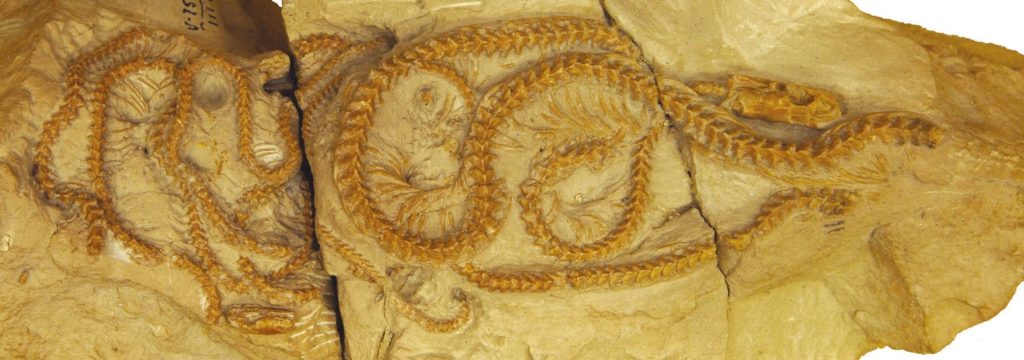Fossil skeleton of newly discovered snake species Hibernophis BrighthauptiThe fossil, which lived 38 million years ago in what is now western Wyoming, reveals insights into the evolution and social behavior of its modern-day descendants. Photo by Jasmine Croghan
Unearthing of ancient snake sheds light on continent’s crawly past.
Newly discovered fossil snake seed The discovery of this snake in Wyoming is revolutionizing our understanding of snake evolution. Unearthed in a burrow, the snake was found in four well-preserved intertwined specimens. Hibernophis Brighthauptilived in North America 34 million years ago. The discovery provides valuable insight into the origin and diversification of boas and pythons.
Hibernophis Brighthaupti The fossil has unique anatomical features, in part because the specimen is articulated, meaning the bones were found all in one mass with the correct order, which is unusual for fossil snakes. The researchers think the fossil may be an early member of Booidea, a group that includes modern boas and pythons. Modern boas are widespread in the Americas, but their early evolution is poorly understood. These new, extremely complete fossils add important new information, especially about the evolution of small burrowing boas known as rubber boas.
Behavioral insights and historical significance
Traditionally, there has been much discussion about the evolution of small burrowing borers. Hibernophis Brighthaupti The find suggests that northern and central North America may have been an important base for their evolution, and the discovery of these curled-up snakes may provide the earliest evidence of the collective hibernation behaviour we know today.
“Modern garter snakes are known to hibernate in burrows or holes in groups of thousands,” says University of Alberta paleontologist Michael Caldwell, who led the study with former graduate student Jasmine Croghan and collaborators from Australia and Brazil. “They do this to take advantage of the ball-like effect that hibernating animals create to conserve heat. It’s intriguing to see evidence of this social behavior and hibernation going back 34 million years.”
Reference: “Morphology and systematics of a new fossil snake from the Early Rupelian (Oligocene) White River Formation, Wyoming,” Jasmine A. Croghan, Alessandro Palci, Silvio Onaly, Michael S.Y. Lee, Michael W. Caldwell, 19 June 2024; Zoological Journal of the Linnean Society.
DOI: 10.1093/zoolinnean/zlae073


